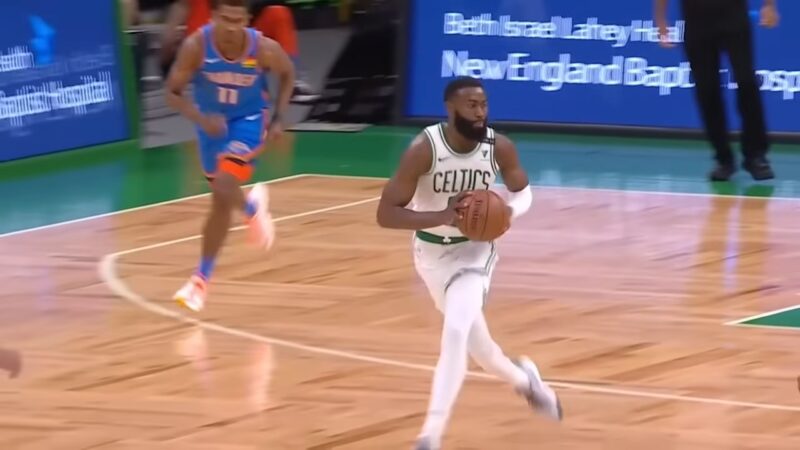In the world of basketball, mastering the rules is key to both playing and appreciating the game to its fullest. Among these essential rules, understanding the concept of a double dribble stands out as crucial for players and fans alike, as it shapes strategies and ensures fair play on the court.
Key Takeaway:
- A double dribble in basketball occurs when a player dribbles the ball, stops, and then begins to dribble again or dribbles with both hands simultaneously.
- Preventing double dribbles ensures fair play by maintaining the game’s flow and upholding the rules that limit how a player can handle the ball.
Definition of Double Dribble
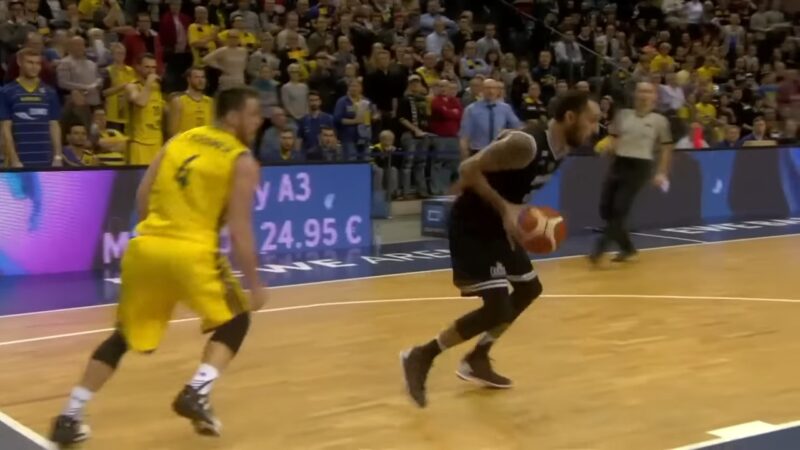
A double dribble is recognized as a fundamental violation in the game of basketball, marking a moment when a player improperly handles the ball during play. This infraction takes place under two primary conditions: firstly, when a player ceases dribbling by grasping the ball with one or both hands and subsequently initiates another dribbling; secondly, it occurs if the player uses both hands to dribble the ball at the same time.
Such actions disrupt the flow of the game and contravene the basic rules designed to ensure fair competition and strategy on the court. The enforcement of this rule helps maintain the integrity of the game by limiting how players can maneuver the ball, thereby preventing any single player from gaining an unfair advantage through improper ball handling.
Fun Fact: The term “double dribble” was coined long after basketball’s invention, as early players primarily passed the ball with little dribbling involved.
Rules and Regulations
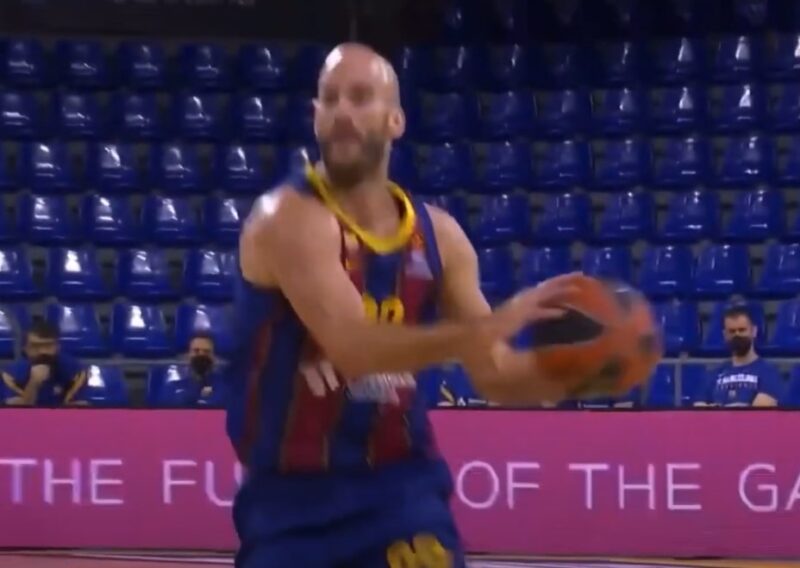
Avoiding double dribbles is crucial for players at all levels, as committing this violation results in an immediate turnover, handing possession of the ball to the opposing team and potentially shifting the momentum of the game. The rules and regulations around double dribbling maintain the integrity and flow of basketball, with slight variations across different leagues such as the NBA, NCAA, and international play governed by FIBA.
The NBA stipulates that it occurs when a player, after having halted their dribble, starts dribbling again or uses both hands to dribble. The NCAA’s rules are closely aligned with the NBA, emphasizing the need for continuous dribbling and penalizing restarts or dual-handed dribbling.
FIBA, overseeing international basketball, adheres to similar principles but may have minor differences in application or emphasis, reflecting the international scope of the game.
Despite the slight differences in how the rule may be interpreted or enforced across different leagues, the fundamental goal is the same: to preserve the competitive nature and spirit of the game by upholding a standard of fairness and skill.
Common Scenarios for Committing Double Dribbles
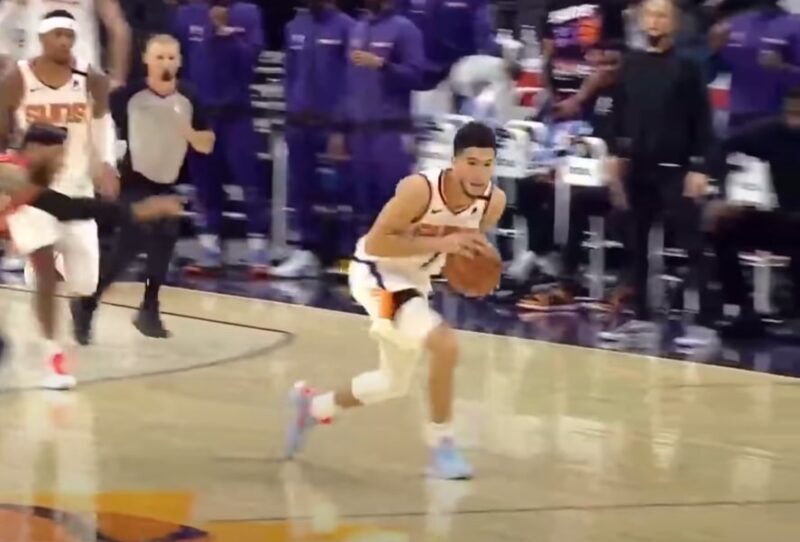
Double dribbles commonly occur in basketball under several scenarios, each illustrating different moments of play or pressure:
- Fast Breaks: Players rushing to move the ball upcourt might stop dribbling to evade a defender and then start again, resulting in a violation.
- Pressure Situations: Inexperienced players or those under tight defensive pressure may pick up their ball to make a pass, find no open teammates, and then resume dribbling.
- Executing Complex Moves: Attempting intricate maneuvers or fakes, a player might accidentally use both hands to dribble the ball, leading to a double call.
- Regaining Control After a Fall: If a player falls or stumbles with the ball, stands up, and starts dribbling again, this action is flagged as a double dribble.
Skills to Avoid Repeated Dribbling
Players can focus on developing several key skills that enhance their ball-handling capabilities and situational awareness on the court. Here are some critical skills with detailed descriptions:
Strong Fundamental Dribbling
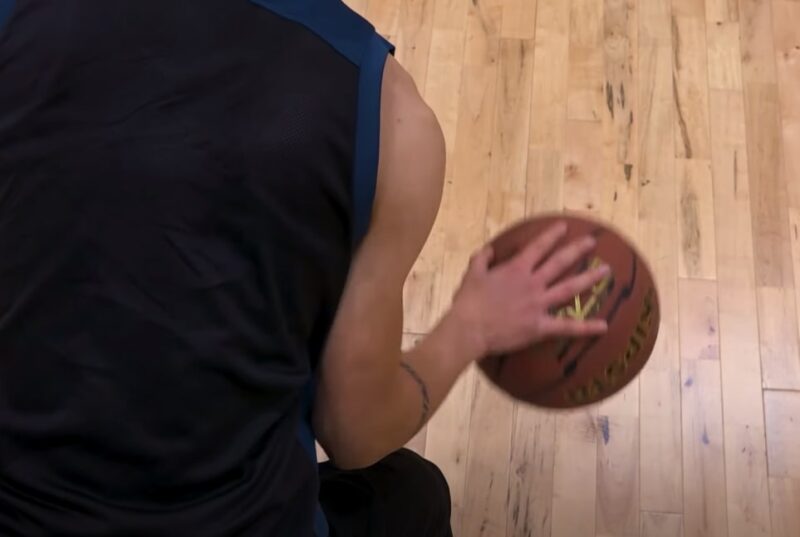
Mastery of basic dribbling techniques lays the foundation for all advanced ball-handling skills. This involves practicing dribbling with both hands, ensuring equal proficiency on either side. Players should work on keeping their dribble low and close to their body to maintain control under pressure and reduce the temptation to stop and restart the dribble unlawfully.
Situational Awareness
Being aware of one’s position on the court, the location of teammates and opponents, and the status of play is crucial. This skill allows players to make informed decisions about when to dribble, pass, or shoot, minimizing situations where they might feel compelled to stop dribbling and then illegally restart. Drills that simulate game situations can help players improve their ability to read the game and react appropriately.
Effective Passing
Developing strong passing skills can help players avoid situations where they might double-dribble. By knowing how to execute precise and timely passes, a player can confidently choose to pass instead of picking up their dribble when faced with a defensive challenge. This reduces the likelihood of being caught in a position that might lead to a violation.
Decision Making Under Pressure
The ability to make quick, smart decisions with the ball is essential, especially under defensive pressure. Players should practice scenarios where they are closely guarded, learning to keep their composure and make the right play without resorting to a panic-induced double dribble. Drills that focus on decision-making skills, such as split-second passing or shooting, can be beneficial.
Advanced Ball-Handling Drills
Engaging in drills that improve dribbling skills under various conditions can help players avoid double dribbling. This includes practicing dribbling with rapid direction changes, speed variations, and while navigating through obstacles or defenders. Such drills enhance a player’s ability to maintain control over the ball without needing to stop and restart their dribble illegally.
Fun Fact: Some of the most memorable turnovers in basketball history have come from accidental repeated dribbling at crucial game moments, highlighting the rule’s impact.
Penalties
The penalties for committing repeated dribbling in basketball are straightforward yet impactful, designed to maintain the integrity and flow of the game. Here are the key consequences players face when violating this rule:
- Turnover of Possession: The most immediate penalty is the loss of possession. When a player is called for double dribbling, the ball is awarded to the opposing team. This turnover can shift the momentum of the game, potentially affecting the scoring dynamics and ultimately the outcome of the contest.
- Disruption of Offensive Flow: Beyond the direct penalty of turning the ball over, committing repeated dribbling disrupts the offensive team’s rhythm and strategy. It halts play and can demoralize the team, especially if such violations occur frequently or during critical moments in the game. Maintaining a smooth offensive flow is crucial for a team’s success, and penalties like these can be significant hindrances.
Historical Context related to double dribbling
The rule against double dribbling has evolved alongside basketball itself, reflecting the sport’s ongoing adjustments to promote fairness, competitiveness, and fluidity in play. Originally, when basketball was invented by Dr. James Naismith in 1891, the rules were rudimentary, and dribbling as we know it today was not a primary aspect of the game.
As dribbling became an integral part of basketball, the need to regulate it became apparent to maintain the sport’s competitive balance. The introduction of the repeated dribbling rule was a response to this need, designed to prevent players from exploiting dribbling to gain an unfair advantage.
Significant moments in basketball history related to double dribbling often involve the clarification of the rule to adapt to the evolving nature of the game. For instance, the distinction between stopping the repeated dribbling and then starting again with both hands versus losing control and regaining possession has been a point of emphasis.
These clarifications have helped players, coaches, and referees have a clearer understanding of what actions are considered violations. The evolution of the rule reflects basketball’s broader evolution, showcasing the sport’s adaptability and its commitment to refining gameplay.
FAQs
Can you start dribbling again after stopping?
No, once you stop dribbling by holding the ball, you cannot start dribbling again.
Is dribbling with both hands at the same time allowed?
No, dribbling with both hands simultaneously constitutes a violation.
What happens if a player commits a double dribble?
The player’s team loses possession of the ball to the opposing team.
Do all basketball leagues follow the same double-dribble rules?
Yes, the NBA, NCAA, and FIBA all prohibit double dribbling, with minor variations in enforcement.
How can players avoid committing a double dribble?
Practicing fundamental dribbling skills and developing strong situational awareness can help avoid double dribbles.
Conclusion
The double dribble is a fundamental violation in basketball that emphasizes the importance of skillful ball handling and adherence to the game’s rules. Understanding the scenarios in which it commonly occurs, and the penalties associated with it is crucial for players at all levels.
By developing strong dribbling fundamentals, situational awareness, and decision-making skills, players can minimize the risk of committing this violation. The evolution of the repeated dribbling rule reflects basketball’s growth and the ongoing efforts to maintain fairness and competitiveness in the sport.
Whether you’re a player aiming to refine your skills or a fan looking to deepen your appreciation of the game, recognizing the impact of double dribbling is essential to enjoying and excelling in basketball.
